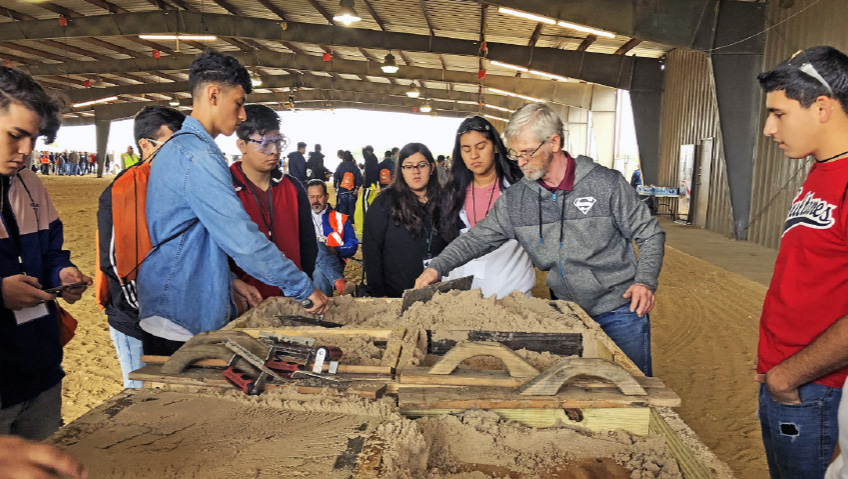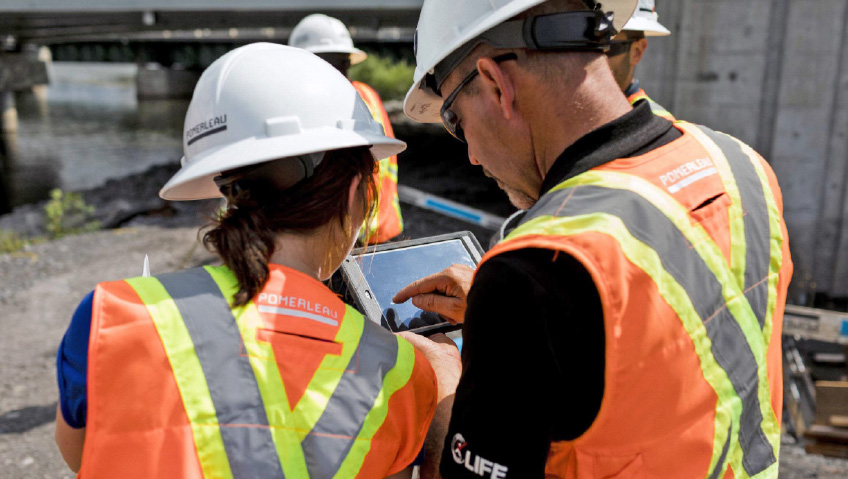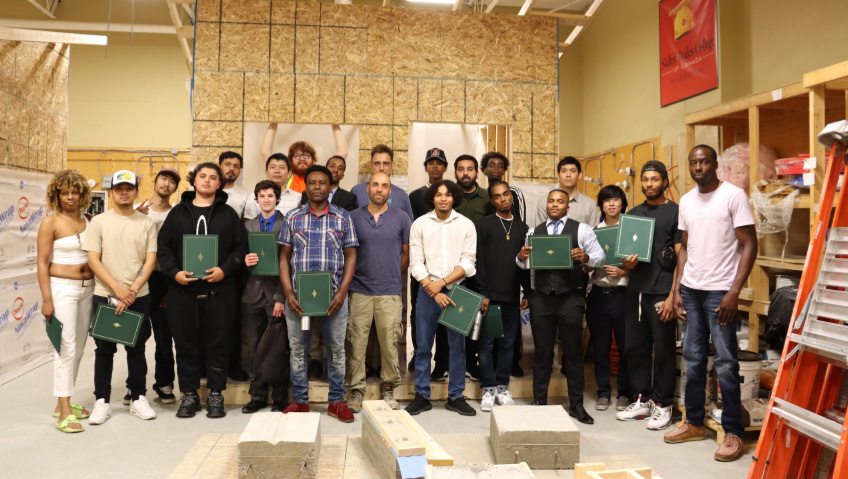With the rise of technology and automation across industries including construction, there’s been an equal rise in concern about the growing skills gap, the resulting labour supply challenges, and ultimately, the impact of this if not addressed. Ironically, technology is not only part of the problem but also part of the solution.
Historically, the construction industry has been slow to evolve. It’s a legacy sector that is comfortable leveraging tried and true building methods, materials, and approaches that have stood the test of time, despite the rise of more efficient materials and methods.
It’s no different with labour, and the dearth of skilled labour in construction is not news. For years the industry and government have discussed this challenge and its impact on industry profitability and the strength of the economy.
A gap too far
Technology has made its way into all aspects of the construction supply chain, from logistics to planning, communication, digitization, equipment and robotics, AI, and wearable technology, and it’s changing the very face of the sector, as well as the labour skills required for its optimal function. New technologies, materials, and approaches require new skills and expertise. The reality is not that there is a lack of labour; many people are searching for employment. Instead, there is a skills mismatch and a generational incongruence in the talent pipeline that needs to be rectified. Metalworkers, plumbers, HVAC professionals—they are all in demand.
A skills gap doesn’t necessarily have to pose a threat. Where smaller gaps exist, it is a sign that the sector is in growth mode. Currently, however, employers are having a hard time filling positions and demand is outpacing supply at unsustainable levels.
The rapid pace of technological advancement is complicating matters further, as is the rate of attrition. The Associated General Contractors of America (AGC) found that 80 percent of contractors report having hiring challenges in the face of attrition. As the Baby Boomers continue to retire, with them go the skills and experience that have served as the cornerstone and strength of the industry for so long.
In the United States, there are many job seekers in the market but employers are still struggling to find employees, which lends to the theory that it’s not a matter of supply alone, but rather a skilled-labour shortage, as workers simply don’t have the particular skills that make them employable in the face of sustained market demand.
Burning Glass Technologies found that, although the ratio of supply to demand for skilled workers in the construction industry is decreasing each year, there is a greater supply than demand. However, employers are doggedly seeking the cream of the crop when it comes to skills and experience and, instead, need to shift the focus to offering training and experience to grow the next generation of talent.
Gone are the days when hiring based on skills and experience was possible. To better meet the needs of an evolving industry, hiring needs to focus on well-rounded individuals and their soft and technical skills, teachability, and their ability to think critically on the job, while ensuring new talent pools are developed and discovered, for instance, women and BIPOC individuals.
Demand builds, supply doesn’t
In the U.S., worker shortfalls are estimated to be in the millions, a demand that will only grow in the years ahead, especially as decaying infrastructure and an exceptional need for housing increase the pressure on the construction industry.
In Canada, in the province of Ontario alone, non-residential work for the five years spanning 2022 to 2027 includes billions of dollars of investment in transit, utilities, nuclear refurbishments, and mining, as well as other infrastructure improvements that are necessary for healthy economic and societal function. The inability to secure labour will have perilous results. Projects are being delayed or outright paused due to labour constraints and as the laws of supply and demand go, where something is in great demand, it becomes more expensive.
Together with rising material costs, supply chain disruptions, and high interest rates, it’s a recipe for disaster, the impact of which will reach far beyond the sector. Increased worker burnout will lead to reduced rates of productivity, safety, and profitability. Contractors will no longer be able to meet client demand and it will reflect in the overall economic and social fabric of the community.
Targeting a response
The technological skills gap not only affects the labour side of the equation but also the management of operations. Companies can leverage technology and data to take stock of the sector as it exists and better understand where the gaps in employment are and what skills are needed. This is the start to creating a targeted response to talent development that will be sustainable for the long term.
For instance, construction workforce-management tools can allow employers to track experience and skill sets, from which analysis can take place and informed decisions can be made. Luckily, an increasing number of operations are leaning on these technologies.
The 2020 AGC/Sage Construction Hiring and Business Outlook Report found that many operations are taking advantage of new technologies and digital software platforms as part of labour-saving efforts, including building information modeling (BIM), drones, 3D printers, and other automation equipment that reduces human errors and better controls outcomes.
However, more needs to be done to attract talent that’s savvy enough to operate the technology and has the innate capacity to acquire the skills and experience necessary for a rewarding career in construction. Beyond internal processes, there must also be a shift in culture and a commitment to investing in human capital. Employers should be willing to invest in skills training and professional development to grow the skill sets of their employees, in turn creating loyal, dedicated employees who are driven to perform.
Instead of viewing the skills gap as a challenge, it could be seen as an opportunity for companies to invest in themselves, to build improved training models that include new technologies and approaches, and to revitalize experiential learning like apprenticeships, internships, and mentorship programs.
Working for optimal outcomes
Any solution will require a coordinated effort that enlists the help of industry partners, government, and educational institutions, as this is a widespread matter that will need all hands on deck to shift the structure and thinking of a society that has discredited the value of a career in the trades for too long.
By working with local schools and employment agencies to align talent-development activities with actual employment needs, employers in the construction space can create a pipeline for themselves by communicating the available opportunities and the quality of life these professions afford, eliminating misconceptions that have arisen around careers in construction. Employers must tackle the worsening talent shortage and the skills mismatch that could cause chaos in the industry if left unaddressed.
These activities can be supplemented with better wages, new benefits, and other efforts to make a construction career more rewarding, which includes leveraging technology to make worksites more efficient, innovative, functional, and engaging—and safer than ever before. This is, truly, the only chance the industry has to make itself attractive to an incoming generation of the sorts of workers the sector needs to forge ahead.






